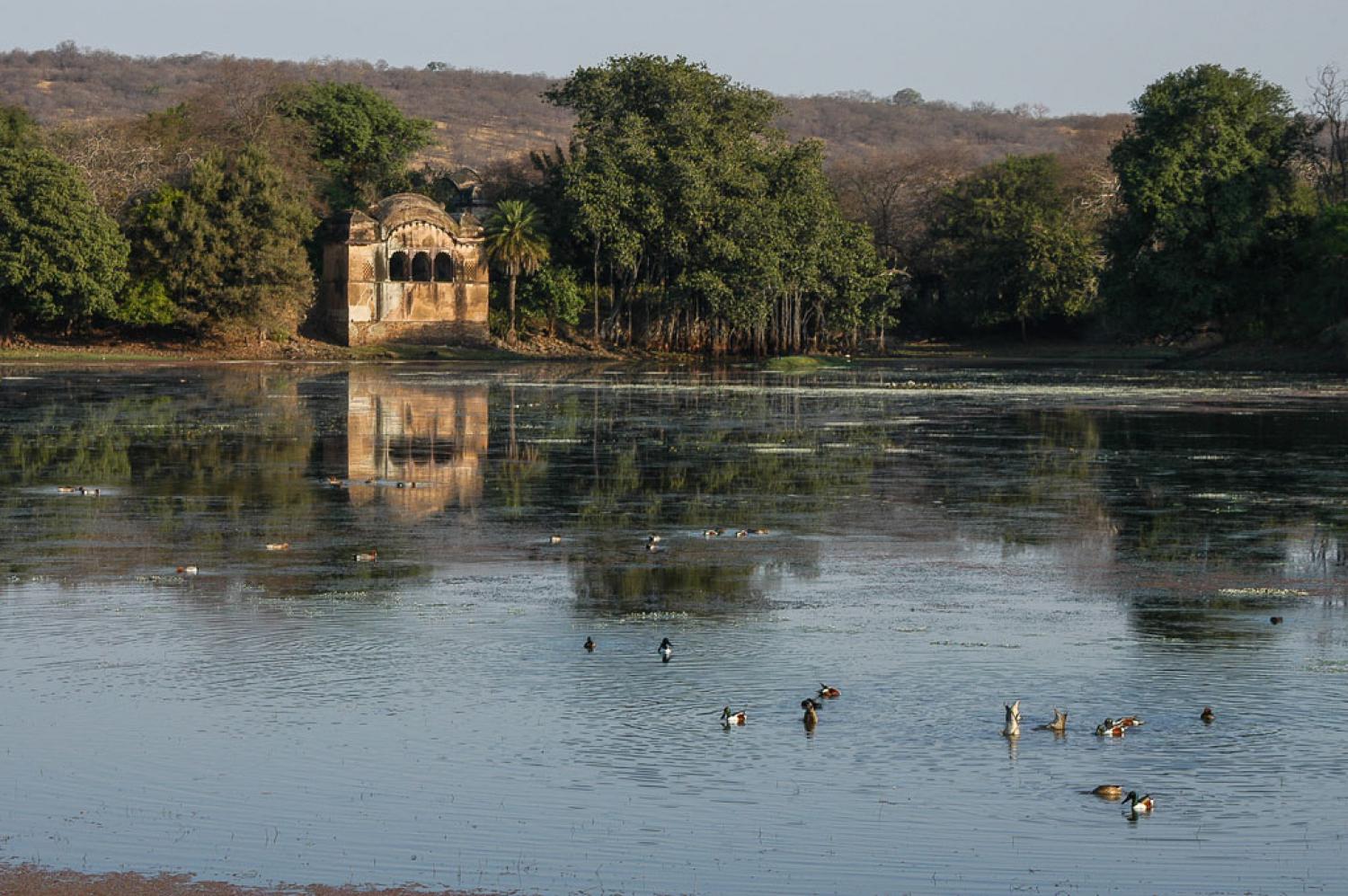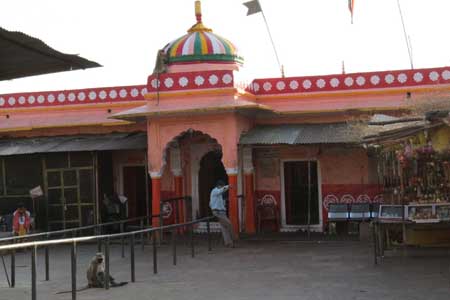+917014543770
+917742318486
260 , Jawahar Nagar Colony Sawai Madhopur Rajasthan ,Pincode:322001
info@ranthamborenationalpark-india.com

Ranthambore National Park, located in the Sawai Madhopur district of Rajasthan, India, is a captivating wilderness destination that showcases the rich biodiversity and awe-inspiring wildlife of the region. Spread over an area of approximately 392 square kilometers. we will delve into the fascinating aspects of Ranthambore National Park, from its history and conservation efforts to the thrilling safari experience and nearby attractions.
Trip to Ranthambore is a dedicated travel agency based in Ranthambore, Sawaimadhopur, specializing in creating unforgettable wildlife experiences. We offer Jungle Safari adventures in Ranthambore National Park, Palighat Chambal Safari tours, and comprehensive sightseeing services around the rich and diverse landscapes of Ranthambore. Our mission is to provide travelers with seamless access to the wonders of Ranthambore’s wildlife and heritage, ensuring a memorable and thrilling experience with nature.
The timings for safari at Ranthambore National Park in India may vary depending on the season. Generally, there are two safari slots available each day, one in the morning and one in the afternoon. The morning safari usually starts early, around sunrise, while the afternoon safari starts in the afternoon and ends before sunset.
Months | Morning Safari | Evening Safari |
|---|---|---|
October 1 to October 31 | 6.30 a.m. to 10 a.m. | 2.30 p.m to 6.00 p.m |
November 1 to January 31 | 7.00 a.m to 10.30 a.m | 2.00 p.m to 5.30 p.m |
February 1 to March 31 | 6.30 a.m to 10.00 a.m | 2.30 p.m to 6.00 p.m |
April 1 to May 15 | 6.00 a.m to 9.30 a.m | 3.00 p.m to 6.30 p.m |
May 15 to June 30 | 6.00 a.m to 9.30 a.m | 3.30 p.m to 7.00 p.m |
Ranthambore National Park offers an incredible opportunity to explore the untamed wilderness and witness the majestic wildlife in their natural habitat. As you plan your visit to this renowned national park, it’s essential to understand the pricing structure for safaris to make informed decisions and ensure an unforgettable experience within your budget.
Safari | Indian National (Per Person ) | Foreign National | Time Duration | Zone |
|---|---|---|---|---|
Canter Safari | 1500.00 INR | 3500.00 INR | 3.30 Hrs | Single Zone |
Gypsy Safari | 2000.00 INR | 4200.00 INR | 3.30 Hrs | Single Zone |
Private Gypsy | 12000.00 INR | 25200.00 INR | 3.30 Hrs | Single Zone |
Private Canter | 30,000.00 INR | 70000.00 INR | 3.30 Hrs | Single Zone |
Tatkal Gypsy | 30000.00 INR | 45000.00 INR | 3.30 Hrs | Single Zone |
Current Booking | 2000 INR (Canter Safari) | 4200 INR (Canter Safari) | 3.30 Hrs | Single Zone |
Ranthambore Tiger Reserve is a renowned tiger territory located in the state of Rajasthan, India. It is one of the most popular wildlife sanctuaries in the country, known for its thriving population of Bengal tigers. Covering an area of approximately 392 square kilometers (151 square miles), Ranthambore Tiger Reserve is characterized by a diverse landscape consisting of dense forests, open grasslands, and picturesque lakes. This varied terrain provides an ideal habitat for a wide range of wildlife species, with tigers being the most iconic and sought-after attraction.
Zone : Tigers
Ranthambhore National Park, located in the state of Rajasthan, India, is renowned for its majestic Tiger Reserve, which is one of the country’s largest and most famous tiger reserves. Besides tiger sightings, there are numerous other activities and attractions to explore in and around Park.
A jungle safari is an exciting adventure that involves exploring and observing wildlife in their natural habitat, typically in dense forested areas known as jungles or rainforests. These safaris provide an opportunity to see a wide variety of animals, birds, and plant species that are unique to these ecosystems.
Tiger Reserve offers fantastic opportunities for photography enthusiasts. Capture the majestic tigers, stunning landscapes, and vibrant culture of the region through your lens. Early mornings and late afternoons are the best times for bird photography as the lighting is soft and warm.
The Palighat Chambal Safari is a popular tourist attraction located in the Chambal Valley of India. It offers visitors a unique opportunity to explore the diverse wildlife and scenic beauty of the region. The safari takes place along the Chambal River, which is known for its rich biodiversity.
Sightseeing in Ranthambore is an Amazing Experience That Everyone Should Try at Least Once in Their Lifetime. Embark on a Trip and Be Amazed by the Unforgettable Beauty of the Jungle in the Ranthambore Tiger Reserve. Get Ready for an Adventure Like No Other
Tourists Places – Ranthambore National Park is one of the most popular tourist destinations in India. There are many places to see in Sawai Madhopur like Fort, Wildlife Sanctuary, Lake, Safari ,Kachida Valley, Padam Talao, hotels,Trinetra Temple etc.

Visit the historic Ranthambhore Fort, a UNESCO World Heritage Site that dates back to the 10th century. Explore the impressive architecture, ancient temples, and enjoy panoramic views of the surrounding landscape

In addition to its natural beauty, Padam Talao is also home to the iconic Jogi Mahal, a historic hunting lodge situated on the lakeshore. Jogi Mahal offers stunning views of the lake and surrounding wilderness.

Kachida Valley is a picturesque and rugged terrain within the park that spans approximately 500 hectares. It is characterized by its undulating landscape, rocky outcrops, and dense vegetation, offering a unique habitat .

Pay a visit to the Trinetra Ganesh Temple located within the Ranthambhore Fort. This temple is dedicated to Lord Ganesha and is believed to be one of the oldest Ganesha temples in Rajasthan.
Ranthambore National Park spans 392 square kilometers, including nearby sanctuaries like Mansingh and Kaila Devi. Known for its thriving tiger population, it is one of India’s top destinations to see these majestic predators in the wild. Tigers here are often spotted during the day, either hunting or caring for their young.
Beyond wildlife, the park also boasts historical ruins, adding to its charm. A visit offers a unique experience with lush greenery, diverse birdlife, and various animals, making it a must-visit destination. According to the National Tiger Conservation Authority’s Status of Tigers 2022 report, India is home to 70% of the world’s tigers, with around 3,167 individuals. This reserve plays a vital role in protecting Bengal tigers.
Located in Sawai Madhopur, Rajasthan, this is one of India’s largest tiger habitats. Declared a wildlife sanctuary in 1955, it later became a key tiger reserve. Known for its diurnal tigers—active during the day—it offers frequent and almost guaranteed sightings. Visitors often see them hunting or playing with cubs.
For an up-close wildlife experience, a jungle safari is highly recommended. These safaris, available from October to June (except Wednesdays), provide a chance to spot not just tigers but also leopards, hyenas, wild cats, reptiles, and birds.
The park’s dedication to conservation is evident in the success of Project Tiger, launched in 1973. This initiative has been crucial in protecting the species and ensuring tigers continue to thrive in their natural habitat.
Located in Sawai Madhopur, Rajasthan, this expansive wildlife sanctuary, covering 1,334 square kilometers, offers a captivating blend of natural beauty and historical significance. Initially established in 1955 and later gaining recognition as a Tiger Reserve in 1973, it became a designated national park in 1980. The sanctuary is home to a diverse array of wildlife, including Royal Bengal Tigers, Leopards, Sloth Bears, Striped Hyenas, and over 270 bird species.
Visitors can explore its ten distinct safari zones via Jeep and Canter Safaris, available in both morning and afternoon sessions. The best time to visit is from October to June when the weather is favorable, and sightings are frequent. Nearby attractions include the historic Ranthambore Fort, the Trinetra Ganesha Temple, and serene lakes, adding cultural depth to the wilderness experience. Access is convenient with Sawai Madhopur Railway Station and Jaipur International Airport nearby, making it a prime destination for wildlife enthusiasts and nature lovers alike.
The national park gets its name from the historic Ranthambore Fort, located within its boundaries. This fort is one of Rajasthan’s famous hill forts and a UNESCO World Heritage Site. Inside, the Trinetra Ganesha Temple is a popular Hindu pilgrimage site.
Before India’s independence, dense forests covered much of the subcontinent. However, rapid population growth and industrialization led to deforestation and a decline in wildlife. Historically, these forests served as royal hunting grounds for Jaipur’s rulers, managed by their hunting department. While occasional hunting did not significantly impact wildlife, industrialization caused a sharp drop in the tiger population.
To protect the forests, the Rajasthan government passed the Rajasthan Forest Act in 1953. In 1955, the area around Ranthambore was declared the Sawai Madhopur Sanctuary. Recognizing the urgent need to save tigers, the Indian government launched Project Tiger in 1973, turning parts of the sanctuary into a tiger reserve.
Over time, the reserve expanded to include nearby forests. The northern region became the Kaila Devi Wildlife Sanctuary, while the southern part was designated as the Sawai Mansingh Wildlife Sanctuary. Today, both are key parts of the Ranthambore Tiger Reserve, showcasing ongoing efforts to conserve this vital ecosystem.
Booking your safari in advance is crucial due to its popularity. Without prior reservations, you might not secure your preferred zone, vehicle, or even seats. To maximize your chances of spotting a tiger, consider booking multiple safaris. Tiger sightings can vary greatly depending on the season and the tigers’ movements. It’s essential to stay hydrated during the safari, which lasts about 3.5 hours, so bring plenty of water. Additionally, because animals may be some distance from the vehicle, carrying a pair of binoculars will help you see them more clearly.
In 1973, major conservation efforts began in the Ranthambore Tiger Reserve with the launch of Project Tiger. This initiative was started by the Indian government in response to a 1972 census revealing a significant decline in the country’s tiger population due to hunting and poaching.
Ranthambore National Park became a key sanctuary for tiger conservation under Project Tiger. The reserves were divided into ‘core areas’ and ‘buffer zones.’ Core areas were designated for tigers to roam freely, with deforestation and commercial activities banned to protect their habitat. Buffer zones allowed for shared use by local communities for farming and other activities, while still supporting conservation efforts.
A statutory body called the National Tiger Conservation Authority (NTCA) was established to ensure the effective implementation of Project Tiger. The NTCA, empowered by the Wildlife Protection Act of 1972 (amended in 2006), monitors compliance with conservation guidelines and supports the project’s administrative and legal needs.
Thanks to these efforts, the tiger population in Ranthambore increased from 66 in 2019 to 81 in 2021. Nationally, the tiger population has grown at an average rate of 6% annually. SP Yadav, a member of the NTCA, emphasizes the importance of raising local awareness about tiger conservation for ecological balance. He advocates for involving locals in eco-tourism and conservation jobs to further motivate them to protect tigers.
Ranthambore has introduced several significant changes aimed at improving wildlife protection and resource management.
Discontinuation of Extended Safaris: The reserve has stopped offering half-day and full-day jungle safaris to reduce animal overexposure to tourists and to lessen the workload on the staff.
Weekly Closures: The reserve is now closed every Wednesday. This new policy provides a day of rest for both the tigers and the staff, minimizing human interference in the animals’ natural habitat.
Limited Safari Bookings: Visitors can now only make six safari reservations per month using a Single Sign-On (SSO) ID. This restriction helps control the number of visitors and ensures fair access to safari slots.
Enhanced Anti-Poaching Measures: Ranthambore has implemented a 24-hour surveillance system featuring thermal cameras and drones. This advanced technology helps prevent poaching and ensures continuous monitoring of the reserve.
Community Engagement: The ‘Tiger Watch’ organization is actively educating the youth of the Mogiya community. By involving them in conservation efforts, the initiative aims to provide alternatives to poaching, which has historically been a means of survival for many families in the community.
Ranthambore National Park provides an exceptional opportunity for visitors to experience a Tiger Safari, offering an up-close encounter with tigers and other wildlife. The park is divided into 10 zones for optimal wildlife viewing, with zones 1-6 being particularly popular. During the summer months, tigers are frequently sighted in zones 3, 4, and 5, where lakes and water bodies provide a necessary respite from the heat.
Safari operations in Ranthambore run from October to June, managed by the Forest Department. Visitors can choose between two types of safaris: the Jeep Safari, accommodating up to 6 people, and the Canter Safari, which can hold up to 20 people. Although the Jeep Safari is more expensive, it is highly recommended by seasoned visitors for its flexibility and ability to access areas that Canters cannot reach.
Each safari session lasts approximately 3.5 hours, with two slots available daily – one in the morning and one in the evening. Due to the high demand, it’s advisable to book your safari well in advance. However, for those making last-minute plans, a limited number of seats are reserved each morning for that evening’s safari and the following morning’s slot. Bookings can be made online for added convenience.
These thoughtfully organized safaris ensure a thrilling and immersive wildlife experience in one of India’s most renowned national parks.
EXCELLENTTrustindex verifies that the original source of the review is Google. NiceTrustindex verifies that the original source of the review is Google. Very goodTrustindex verifies that the original source of the review is Google. Very nice placeTrustindex verifies that the original source of the review is Google. Nice..Trustindex verifies that the original source of the review is Google. Super placeVerified by TrustindexTrustindex verified badge is the Universal Symbol of Trust. Only the greatest companies can get the verified badge who has a review score above 4.5, based on customer reviews over the past 12 months. Read more
+917014543770
+917742318486
260 , Jawahar Nagar Colony Sawai Madhopur Rajasthan ,Pincode:322001
info@ranthamborenationalpark-india.com